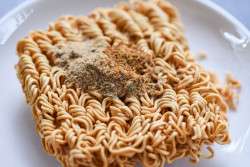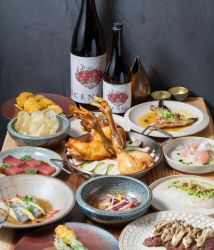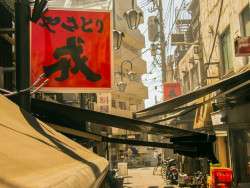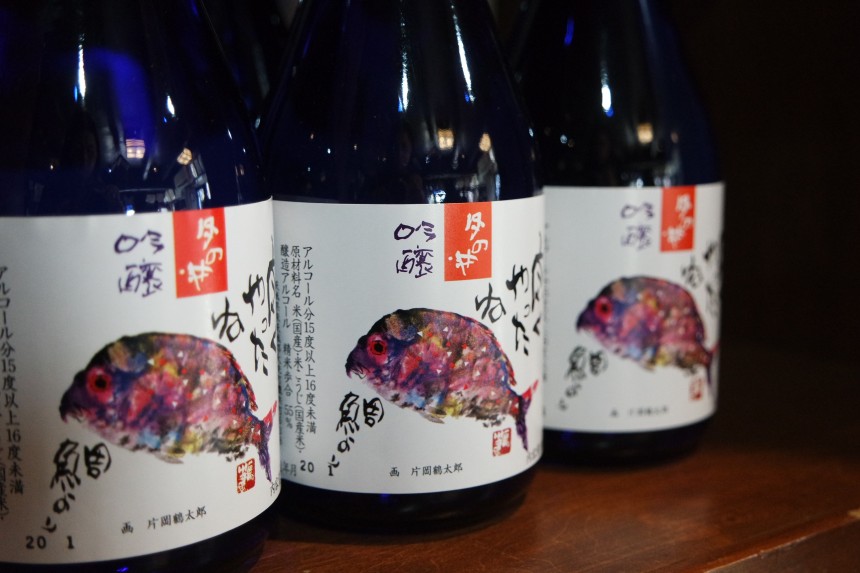
April 8, 2020

Gourmet Ibaraki: Fermented and Fresh Delights
An hour from Tokyo, Japan’s flavors flourish
Chefs often talk with more appreciation for their suppliers than their own cooking methods, as good cooks know that food starts in the field and in the farm. In that vein, Tokyoites have Ibaraki Prefecture to thank for most of Kanto’s oishii exclamations.
From Ibaraki’s vast farmlands and breweries to its Edo-era kitchens and gourmet cuisine, visitors to the coastal prefecture will find rich traces of the country’s culinary scene.
Fermenting Japan’s flavors
A prehistoric preservation technique, fermentation is only getting more popular. Sake, soy and miso have traveled beyond Japan to join other internationally beloved superfoods. In Japan, certain prefectures tend to be famous for certain foods, and when it comes to that good bacteria, Ibaraki is among the top fermented food hubs in the country.
Tsukinoi Shuzo
Ibaraki has the highest number of sake breweries in the Kanto region, many of which are family-owned and centuries-old, like Tsukinoi Shuzo. Close to the Oarai coast, this 160-year-old sake brewery has stayed faithful to a completely manual brewing process from start to finish. Producing organic sake products is the brand’s specialty.
From a classic award-winning junmai (pure rice) sake, to a forward-thinking rosy sake made with naturally pink koji (fermentation culture) fungus, Tsukinoi Shuzo takes creativity up a notch with goods like sake ice cream and sake kasu (leftover lees) hand cream. The brewery tour and tasting go the extra mile. Visitors can taste koji rice as it dries combed like a zen garden, or take a sip straight from the sake barrel if the timing is right (this part of the tour isn’t available year-round).
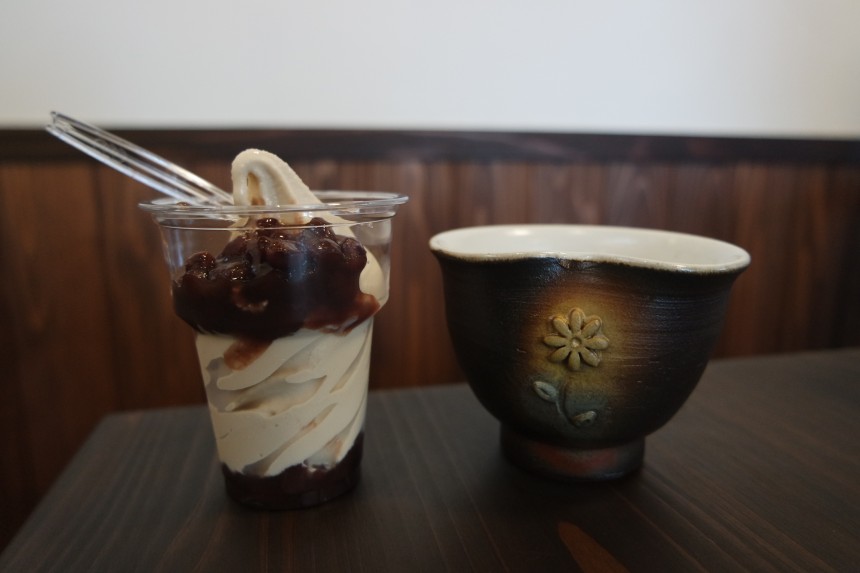
Kurosawa Shoyu
Precious natural yeasts and bacteria have been growing in the Meiji-era building walls and cedar-wood barrels at Kurosawa Shoyu for more than 100 years. This history, along with letting mixtures naturally ferment for over a year, gives the soy sauce an enviable umami that artificially accelerated fermentation could never achieve.
Fourth generation owner Jinichi Kurosawa carries on the company’s tradition of omotenashi (hospitality) by welcoming visitors for tours and tastings. From Kurosawa Shoyu’s best-selling standard soy sauce to ponzu (citrus sauce) and a rare cherry-wood smoked soy sauce, visitors can taste and buy each product. For an unmissable savory-sweet treat, visitors should try the soy sauce soft serve and pudding.
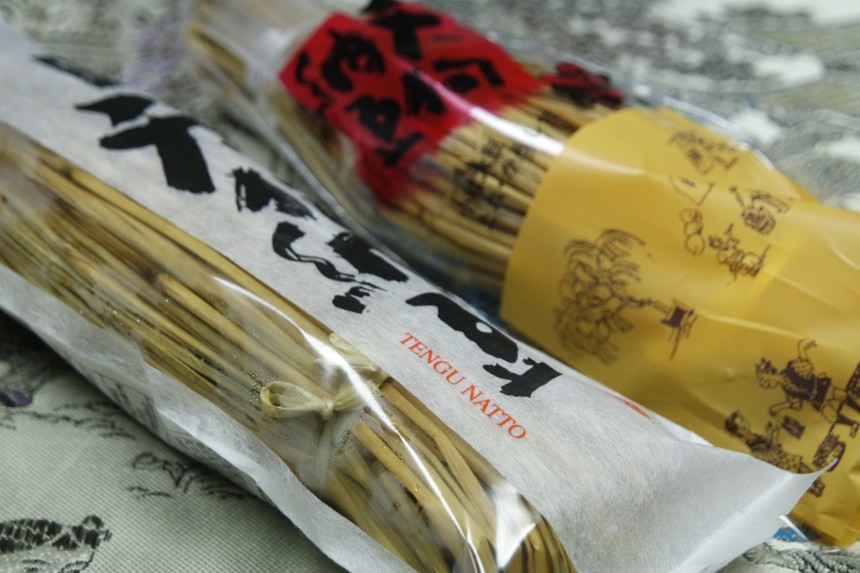
Tengu Natto
A signature Japanese breakfast item, natto (fermented soybeans) is a love-it-or-hate-it food and the best of the best famously comes from Ibaraki. For those who love natto, the pungent, slimy product has multiple health benefits, like lowering one’s cholesterol. For those yet to be converted, the aromatic manufacturing facilities of Tengu Natto in Mito might just change their minds.
Tengu Natto is a legend, known for standardizing the process for large-scale natto manufacturing with strict quality control measures. Employees taste every batch of natto (new batches are made roughly every 20 hours). Tengu Natto comes up with playful new products like sweet black bean natto, while also making traditional natto packaged in rice straw.
Note that natto bacteria spoils sake, miso and soy, so visitors are forbidden from eating natto on the day of visiting a brewery, while sake, miso and soy workers are forbidden from eating it for the whole duration of working on a batch.
Ibaraki’s fresh farmlands
Everything seems to thrive in Ibaraki – rice, sweet potato, shiitake mushrooms and burdock root, to name a few. The prefecture is also Japan’s largest producer of chestnuts, Napa cabbage and lotus root. Lotus roots grown in the low-lying wetlands of Kasumigaura Lake are high-quality and yield large quantities.

Sankyodai lotus root farm
A small family farm in Inashiki, Sankyodai literally means “three brothers” in Japanese. The brothers who own the farm pivoted to lotus farming later in life, meticulously studying soil composition and lotus root varieties. As a result, they aim for sustainable, high-quality farming methods and open their doors to young people coming from non-farming families.
The lotus flower is a revered Buddhist symbol because it grows in mud and rises above the water’s surface to bloom, signifying purification and enlightenment. Meanwhile, the plant’s roots are also considered an auspicious produce. The owners work in mud, carefully harvest the roots, then clean and process them. Visitors at the farm can taste the brothers’ homemade lotus root dishes. A summer visit guarantees sweeping views of flowering lush green lotus fields.
Ibaraki gourmet: wagyu, seafood and more
Ibaraki’s gourmet offerings are more than plant-based. Hitachi wagyu beef is one of Japan’s top beef varieties and is in the same class as Kobe beef. Another regional speciality, Hitachi No Kagayaki is a new brand of luxurious pork to come out of the area.
The prefecture’s vast coastal area is also blessed with fresh seafood, the most famous Ibaraki delicacy being monkfish. A rather controversial and acquired product, this winter delicacy has humble roots but is now considered a real treat, especially its creamy liver. In Ibaraki, the Oarai Hotel has both freshly caught monkfish cutting shows and monkfish nabe (hotpot) dinners.

For a taste of Ibaraki beef, pork or chicken combined with seasonal vegetables, the high-end fusion restaurant Touemon is a must-visit. The chef crafts various dishes based on Italian and Japanese cuisine, using seasonal Ibaraki produce and meat, and guests get to dine in a stylish 200-year-old house with a thatched roof and Japanese garden. There’s also a renovated rice granary turned bakery cafe on the premises.
Book a tour
Want to taste Ibaraki’s food straight from the source? Consider booking a tour with Japan Travel. Check here for a full list of tours in Ibaraki. Keep in mind that tour contents are subject to change.
Ibaraki Tsuchiura Cycling Tour
Discover the beauty of Lake Kasumigaura on a 2-day cycling tour, visit a sake brewery, sample local produce and enjoy the views that change with seasons.
1-Day Ibaraki Food Tour
Meet the locals, learn about their trades, and try your hand at cooking with local ingredients or pay a visit to a soy sauce factory and learn how this worldwide popular condiment is traditionally produced.
2-Day Ibaraki Food Tour
Explore rural Japan, just northeast of Tokyo – enjoy local flavors, meet local producers, and see how daily life unfolds outside the hustle and bustle of big cities – in quaint Ibaraki Prefecture.
How to get there
Depending on your destination in Ibaraki, it takes between one to two hours by train from Tokyo, or roughly an hour by car.


